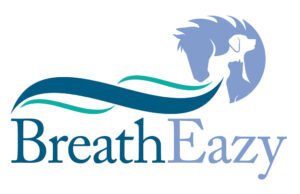What is equine asthma?
Equine asthma is a common clinical respiratory condition in the equine population, and it is especially common for horses to present to veterinary practices as mild or moderate cases. Many owners accept mild equine asthma signs as ‘normal’ in their horses and ponies, blaming dusty forage and bedding in the winter, or pollen during the summer; often saying “oh, he/she always coughs at the start of exercise, that’s normal!” However, horses frequently require veterinary examination and intervention for this respiratory condition, especially as they age, or when unmanaged cases become chronic, or if there is an acute flare-up resulting in an episode of respiratory distress (an ‘asthma attack’). As such, akin to any other disease, it is useful to be able to confirm a diagnosis early in the disease course to aid treatment decisions. This is typically done using respiratory tract endoscopy to perform a tracheal wash (TW) and/or bronchoalveolar lavage (BAL).
What are the clinical signs of equine asthma?
Equine asthma is characterised by the following clinical symptoms:
- Increased respiratory rate and effort at rest
- Coughing (sometimes only observed during exercise or upon increased exertion)
- Exercise intolerance
- Increased mucus production from the airways (typically white mucoid discharge)
- A heave line (external abdominal oblique muscle hypertrophy on either side of the abdomen)
- In poorly controlled or severe cases – episodes of respiratory distress
What’s new in equine asthma?
A recent EVJ study by Dupuis-Lowd and Lavoie has investigated bronchial smooth muscle remodelling in moderate and mild equine asthma, with the aim of developing a way to measure asthma progression and response to therapy through the use of biomarkers. The question asked was whether airway remodelling – characterised by epithelial smooth myocyte hypertrophy (increased size), hyperplasia (increased number) and changes in contractility – is seen in mild and moderate cases of equine asthma, as it is in severe cases of equine asthma. Increases in smooth muscle mass (due to hyperplasia and hypertrophy) are believed to be one of the main contributors to hyperresponsiveness and bronchospasm of the airways, resulting in coughing.
Study design
The study was a small retrospective case-control study spanning a period of 64 months (and therefore encompassing multiple seasons and likely associated management changes), with 18 clinical cases of mild to moderate equine asthma recruited, plus seven case-matched controls (matched on the basis of their age, gender and housing). The 18 clinical cases were defined as those with clinical signs of mild or moderate asthma and bronchoalveolar fluid (BALF) cytology consistent with mild or moderate asthma i.e. cytological increases in at least one granulocyte population (≥5% neutrophils, ≥2% mast cells or ≥1% eosinophils, or mixed increases). Case-matched controls had no signs of respiratory disease or lower airway inflammation, a normal physical examination, normal haematological parameters, and no history of respiratory distress at rest. Further cases were excluded from certain analyses based on a lack of smooth muscle in their endobronchial biopsies which prevented genomic or histomorphometry analyses.
Airway smooth muscle remodelling was measured by quantifying the expression of the proliferating cell nuclear antigen (PCNA) using immunohistochemistry and histomorphometry. Histomorphometry is a two-dimensional histological assessment, looking at the structural and remodelling parameters of tissue – in this case assessing degrees of hypertrophy and hyperplasia of bronchial smooth muscle. Smooth myocyte area, percentage and density were all recorded. In this study, the histomorphometry was assessed by someone blinded to the health status of horses in the study to avoid the introduction of any detection bias. Evaluation of the BALF differential cell counts was also performed blindly.
Mature smooth muscle cells have a phenomenon of phenotype plasticity, which means that they can change from a contractile to a hypertrophic phenotype in response to different stimuli. Changes in smooth muscle contractility were assessed on the basis of whether there was expression of the (+)insert smooth muscle myosin heavy chain (SMMHC) isoform, a hypercontractile protein. This was assessed by genetic RT-qPCR testing. The +(insert) SMMHC isoform has twice the muscle contractility speed of the (-)insert isoform and is therefore hypothesised to result in excess bronchoconstriction of the airways in mild and moderate cases of equine asthma. Increases in +(insert) SMMHC isoform may also lead to increased airway stiffness, due to reduced relaxation of the smooth muscle cells during tidal breathing, and subsequent airway narrowing.
Study Validity
Strengths:
- High level of authority due to publishing journal, providing good quality evidence
- Relatively high up in hierarchy of evidence due to study design
- Data analysis explained well
- Statistical methods chosen appear appropriate to study design
- Reporting is clear – all horses are accounted for and a comprehensive methodology is outlined with sufficient detail provided for the study to be repeatable
- Study does address the question the researchers set out to answer
- No detection or recall bias present
- Age, gender and housing were matched between groups
Weaknesses
- Some selection biases present:
- Duration of clinical signs was 3 months to 5 years, which may not be reflective of clinical cases in practice – some are affected for much longer than this prior to intervention
- Mean age of onset was 5 +/- 3.2 years – clinical cases will often present later in life than this before intervention
- Endobronchial biopsies were taken from bronchial bifurcations randomly selected along the principal bronchus – this is not a typically utilised diagnostic test in equine practice nor necessarily reflective of the lower airways. Conclusions drawn are therefore limited to the central airways, and hyperplastic and hypertrophic smooth muscle changes may have been underestimated – they may also have been underestimated due to anticipated low yields of smooth myocytes on endobronchial biopsies
Study findings
- In this study expression of the (+)insert SMMHC isoform in airway smooth muscle was approximately 1.5x greater in horses with mild and moderate equine asthma compared to controls – this was a statistically significant
- Despite the increase in the expression of the +(insert) SMMHC isoform in horses suffering from asthma (therefore demonstrating increased myocyte contractility), this did not directly correlate with an increase in the proliferation of smooth myocytes or myocyte density in the central airways, nor the degree of neutrophilic inflammation seen cytologically
- However, there was a significant positive correlation (within the asthmatic group) between the myocyte proliferation rate and the expression of the +(insert) SMMHC isoform – suggesting that there may be common factors between myocyte proliferation and myocyte contractility and that they do in fact influence each other in some way
- Positive correlations between BALF neutrophilia (characteristic of equine asthma, and the most common type of airway inflammation observed on TW/BAL cytology in the recruited clinical cases) and PCNA expression were identified
- The authors speculated that different underlying causes of asthma (e.g. equine asthma associated with stabling during the winter and dusty forage/bedding vs. summer-pasture associated equine asthma due to pollen) could influence (+)insert SMMHC isoform expression
- They also speculated that medical treatment or allergen avoidance as part of the management of asthma cases could influence reversible (+)insert SMMHC isoform expression
Conclusions and clinical relevance
So, does this change what we should do in practice for the management of moderate and mild equine asthma? The study concluded that in these mild and moderate cases, airway changes are more likely to be functional than structural – with increased myocyte contractility due to changes in gene expression. Functional smooth myocyte changes are reversible, and therefore it would be reasonable to conclude from the data presented that as veterinary surgeons we should be aiming to treat all cases of mild and moderate asthma to reverse these functional changes as soon as possible. Increased functional smooth muscle contractility and neutrophilia may promote structural changes, therefore prompt diagnosis and treatment of mild and moderate equine asthma cases should help to prevent potentially irreversible changes of the airways seen in chronic or severe cases of the disease, where structural hyperplastic and hypertrophic remodelling has occurred.
Further work
- A prospective study would allow better evaluation of how the history of corticosteroid administration, being kept at pasture or hay replacement could potentially influence e.g. (+)insert SMMHC expression
- Longitudinal studies following the clinical outcomes of animals presenting with evidence of airway remodelling could determine the relevance of the genomic and histomorphometry changes found in this study
Find out about the use of the Flexineb® nebuliser in the management of equine asthma here.

